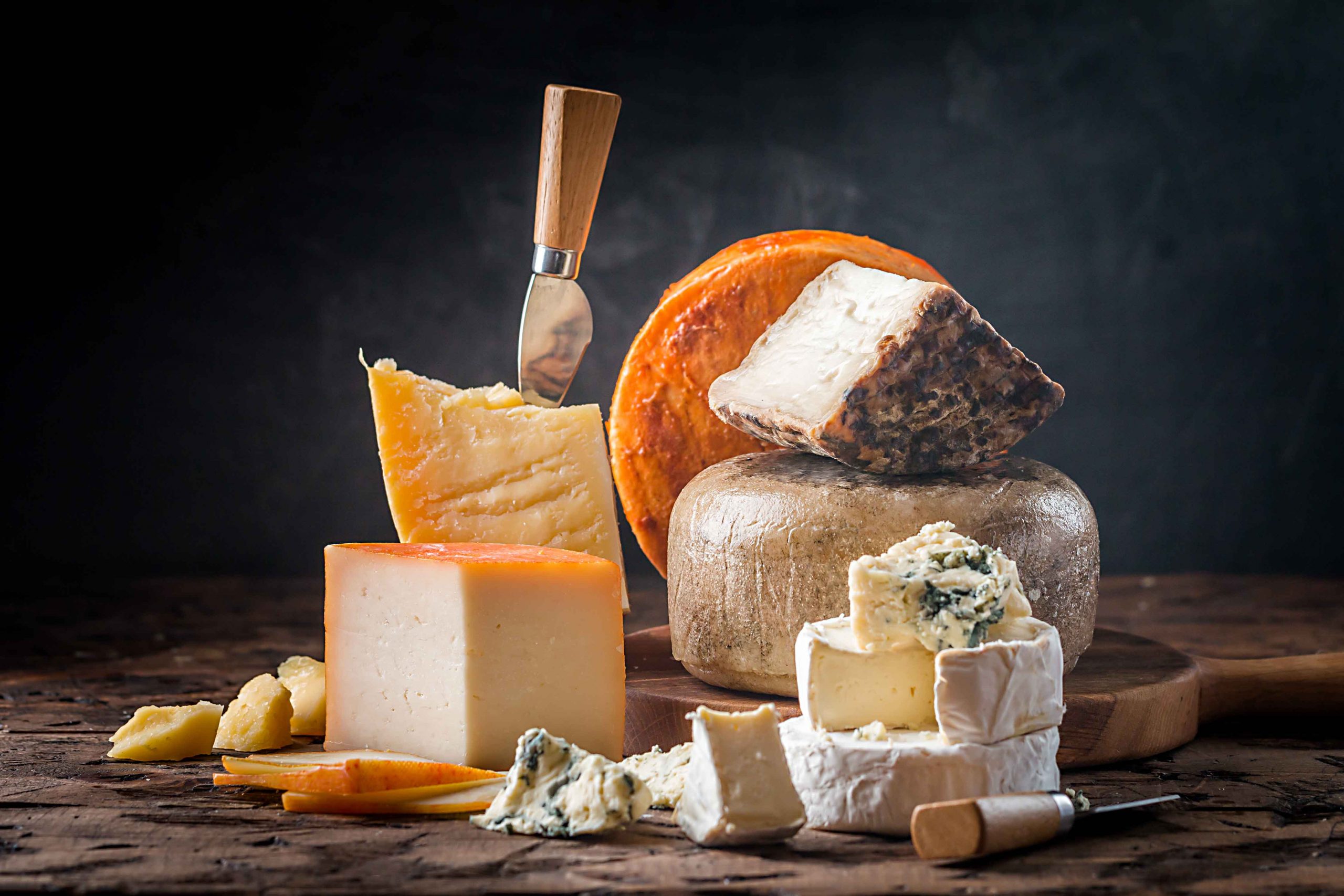
There are almost 2,000 different types of cheese in the world (with France alone accounting for somewhere between 1,000 and 1,600 of these!). The reason for this diversity of dairy is all down to the cheese-making process. In this blog we will talk about this process affects the flavour, nutritional value and FODMAP content of cheese.
There are almost 2,000 different types of cheese in the world (with France alone accounting for somewhere between 1,000 and 1,600 of these!). The reason for this diversity of dairy is all down to the cheese-making process. In this blog we will talk about this process affects the flavour, nutritional value and FODMAP content of cheese.
People have been making cheese for thousands of years and the fundamental recipe hasn’t changed: milk, enzymes that curdle the milk and microbes that acidify and flavour the milk. The other key factor is time. Over time the enzymes and microbes break down the milk proteins and fats into a diverse variety of flavour compounds.
Casein proteins are first broken into smaller pieces called peptides. These are in turn converted into the 20 distinct building blocks of all proteins, the amino acids. These can impart a sweet or savoury flavour, depending on the ratios. The amino acids can be fragmented further still into amines. When isolated, these compounds can smell of ammonia, sulphur or even fish! I know that doesn’t sound particularly appealing, but trace amounts of these compounds are what give aged cheese its complex flavour.
Similarly, the fats in milk can be broken down into smaller molecules known as fatty acids. The microbes that are added to blue cheese create fatty acids that have a characteristic peppery aroma. The copper-lined vessels that are used in the making of parmesan and some Swiss cheeses can damage milk fat molecules directly, creating some of the fatty acids that give those cheeses their characteristic flavors.
Often, one of the first steps taken by those who suspect they have lactose intolerance or malabsorption is to eliminate all dairy from their diet. This may not be necessary when it comes to cheese. Happily, those friendly microbes (particularly lactic acid bacteria) convert the lactose in milk into organic acids, making it quite tolerable by people with lactose intolerance. This process continues as the cheese ages, so more aged cheeses tend to have less lactose. One cup of milk can contain approximately 13 grams of lactose, while 50 grams of parmesan cheese could contain as little as 0.08 grams of lactose.
That’s where we can help. Our 6-Week Discovery Plan has been created to support people through the process of finding the foods that are right for their bodies. In 6 weeks you will test your tolerance to 4 hard-to-digest food components; lactose, fructose, sorbitol, and inulin. And…you’ll have access to exclusive features on the app and be part of a support program. So, if lactose is an issue for you why not really find out what’s going on.
IBS and digestive symptoms can put a person under a lot of strain, we know how much they affect the lives of our customers. If you are looking to find the root cause of your digestive issues check out our AIRE device and FODMAP Testing Kit, this digestive duo are changing the face of IBS treatment.

MSc, Clinical Development Associate
Be the first to discover our latest articles, tips, and recipes
